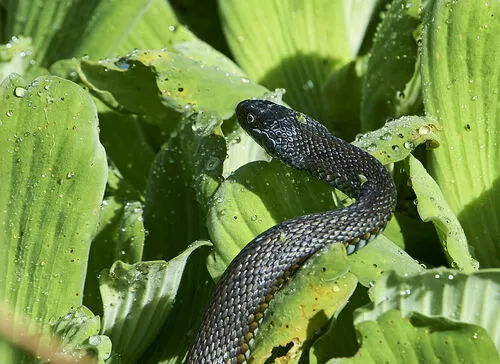
This week, the United States Fish and Wildlife Service ("Service") published a final rule designating critical habitat for the northern Mexican gartersnake (Thamnophis eques megalops) under the Endangered Species Act (“ESA”). The final critical habitat designation includes a total of approximately 20,326 acres of land located in Arizona and New Mexico.
The northern Mexican gartersnake, an olive-colored snake identifiable by a pattern of vertical yellow stripes and paired black dots lining its body, typically occurs in shallow wetlands and aquatic habitats, such as stock tanks, riverbanks, and backwaters. The species’ current range covers portions of Arizona, southwestern New Mexico, and northern Mexico.
Originally listed under the ESA as threatened in July of 2014, the northern Mexican gartersnake has continued to experience population declines. The Service attributes the majority of the species’ decline to competition with and predation by non-native species, such as bullfrogs, crayfish, and warmwater sportfish. Other threats include habitat modification, destruction, and fragmentation, and drought.
Under the ESA, the Service designates certain areas as critical habitat for a species when the agency determines those areas are particularly important to the species’ conservation. On July 10, 2013, as part of the proposed listing of the gartnersnake, the Service initially proposed to designate approximately 421,423 acres of critical habitat for the gartersnake. Last year, the Service published a revised proposal that reduced the critical habitat designation to approximately 27,784 acres. On April 28, 2021, the Service published the final rule, which further reduced the designation to approximately 20,326 acres, citing the existence of conservation plans that address the special management needs of the species’ habitat as the primary basis for the additional reduction. The final critical habitat designation includes areas in Grant County, New Mexico, and La Paz, Mohave, Yavapai, Gila, Cochise, Santa Cruz, and Pima Counties, Arizona.
The final rule will become effective on May 28, 2021.
- Associate
Sam Savoni focuses her practice on a variety of environmental and land use matters, including those dealing with the Endangered Species Act, National Environmental Policy Act, Clean Water Act, National Historic Preservation Act ...
Nossaman’s Endangered Species Law & Policy blog focuses on news, events, and policies affecting endangered species issues in California and throughout the United States. Topics include listing and critical habitat decisions, conservation and recovery planning, inter-agency consultation, and related developments in law, policy, and science. We also inform readers about regulatory and legislative developments, as well as key court decisions.
Stay Connected
 RSS Feed
RSS Feed
Categories
- Alternative Energy
- Bald and Golden Eagle Protection Act
- Budget
- CEQA
- CESA
- Climate Change
- Congress
- Conservation
- Construction Projects
- Consultation
- Continuing Education
- Court Decisions
- Critical Habitat
- Delisting
- Endangered Species Act
- Event
- Fish & Wildlife Service
- Freedom of Information Act
- Government Administration
- Legal
- Legislation
- Listing
- Litigation
- Migratory Bird
- National Marine Fisheries Service
- NEPA
- Off Shore Wind
- Pacific Northwest
- project
- Publications
- Regulatory Reform
- Sacramento-San Joaquin Delta
- SEPA
- Speaking Engagements
- Supreme Court
- Texas
- Timberland
- Water Issues

